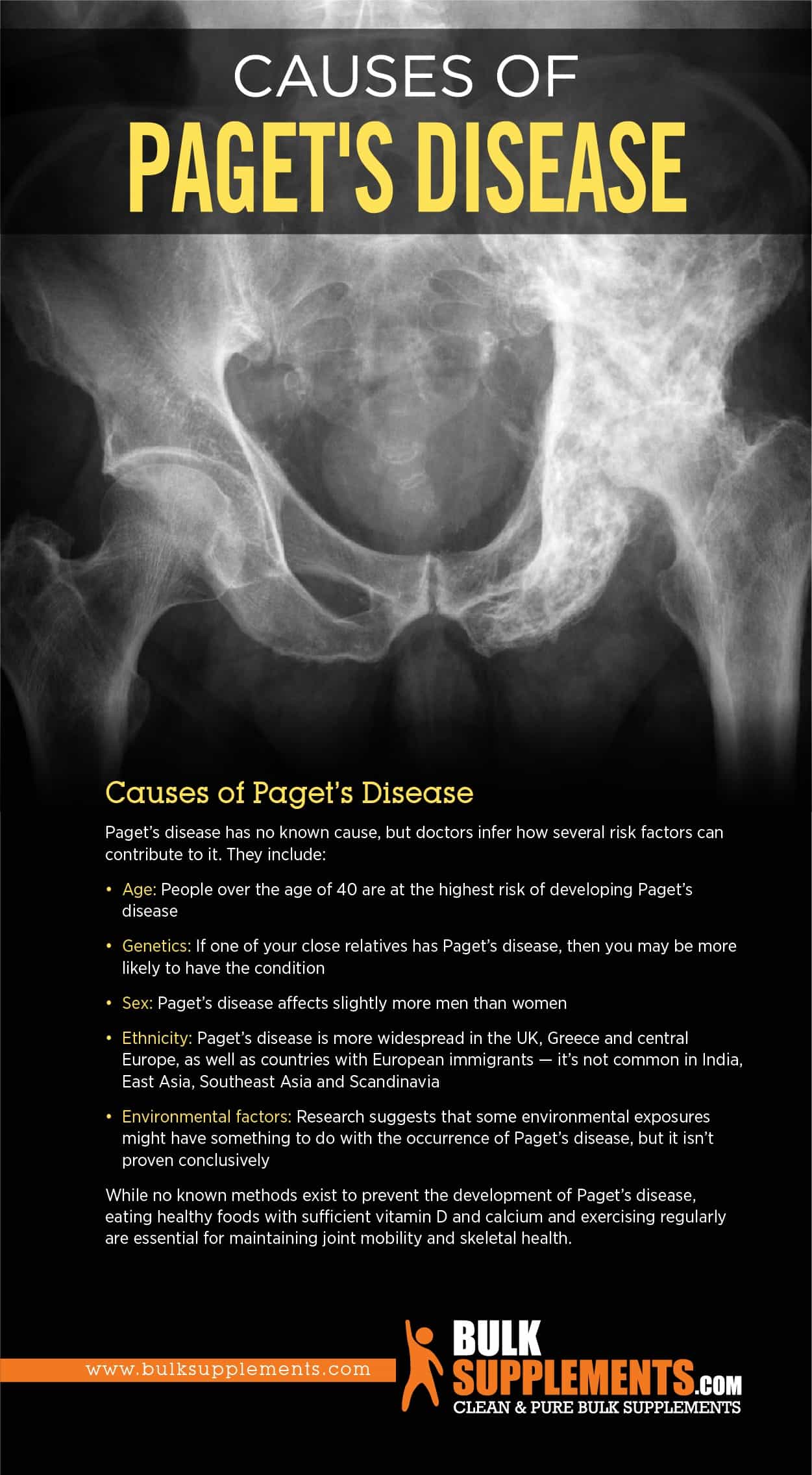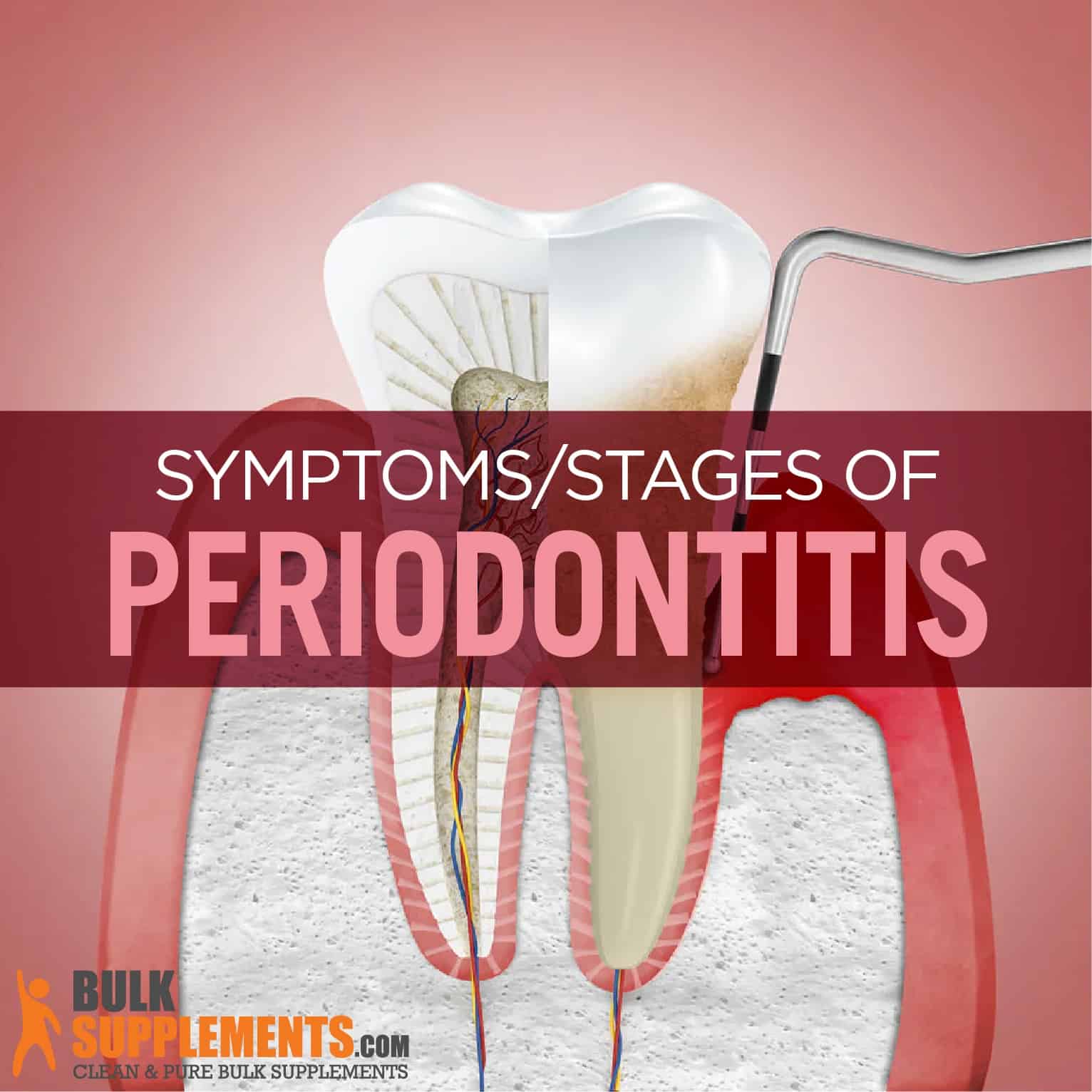Paget’s Disease: Symptoms, Causes & Treatment

Paget's Disease
What is Paget’s Disease?
Paget’s disease was first discovered by Sir James Paget in 1877. It’s a bone condition that affects the development and renewal of bones, which makes them weaker than normal.
When you suffer from Paget’s disease, your body is forced to make new bone too fast, thus producing bones that are more brittle and softer than healthy, normal bones. This leads to the pain, fractures and bone deformities that often accompany the disease.
Paget’s disease is rarely found in young adults. However, it’s the second-most common bone condition in the elderly, after osteoporosis.
While the cause is unknown, genetics may have something to do with it. The condition often runs in families. Doctors think a slow-growing virus might trigger the condition as some cells in bones of those with Paget’s disease seem like they have a virus. However, a specific virus hasn’t been found yet.
Paget’s disease rarely occurs in certain regions around the world, such as in Japan. But it’s more common in the United Kingdom, Australia and the United States. In the U.S., about 10 percent of people over the age of 80 suffer from Paget’s disease.
In most cases, Paget’s disease treatment involves taking medicines to slow down or halt the development of the condition. For patients with complications, surgery might be required to help heal fractures or realign deformed bones.
Symptoms of Paget’s Disease
Many with Paget’s disease show no symptoms at all. This condition is often first detected during x-rays for another problem or when regular blood work shows an increased level of alkaline phosphatase in blood serum.
Pain
In people with Paget’s disease, the most common complaint is bone pain. This pain may be due to Paget’s disease itself or its complications, including:
- Bone deformity, including bowed, affected bones
- Fractures caused by brittle bones
- Compression on surrounding nerves by enlarged bones, resulting in a loss of movement or sensation
- Severe arthritis in joints around the affected bones
Other Symptoms
Paget’s disease symptoms can also result from the impact of the disorder on calcium levels in the blood. When Paget’s is present, overactive osteoclasts can release calcium from bone and raise its levels in the bloodstream. This rare complication may cause a number of symptoms, such as:
- Constipation
- Abdominal pain
- Loss of appetite
- Weakness
- Fatigue
Causes of Paget’s Disease
Paget’s disease has no known cause, but doctors infer how several risk factors can contribute to it. They include:
- Age: People over the age of 40 are at the highest risk of developing Paget’s disease
- Genetics: If one of your close relatives has Paget’s disease, then you may be more likely to have the condition
- Sex: Paget’s disease affects slightly more men than women
- Ethnicity: Paget’s disease is more widespread in the UK, Greece and central Europe, as well as countries with European immigrants — it’s not common in India, East Asia, Southeast Asia and Scandinavia
- Environmental factors: Research suggests that some environmental exposures might have something to do with the occurrence of Paget’s disease, but it isn’t proven conclusively
While no known methods exist to prevent the development of Paget’s disease, eating healthy foods with sufficient vitamin D and calcium and exercising regularly are essential for maintaining joint mobility and skeletal health.

Treatment of Paget’s Disease
If you show no symptoms, you may not require treatment. But if the condition is active and is affecting areas in your body with a high risk (like your spine or skull), your doctor can suggest treatment to avoid complications, whether you have symptoms or not.
Medicines that help relieve the pain of Paget’s disease include anti-inflammatory drugs like Naproxen and Ibuprofen, as well as Acetaminophen (Tylenol).
Biophosphonates (Osteoporosis Drugs)
These are the most common medications used to treat Paget’s disease. Some biophosphonates are used orally, while others are administered intravenously. Oral biophosphonates are largely well-tolerated, but can irritate the gastrointestinal tract. Below are some examples:
- Ibandronate (Boniva)
- Risendronate (Actonel)
- Alendronate (Fosamax)
Pamidronate (Aredia) and Zoledronic Acid (Reclast)
These biophosphonate drugs are taken intravenously (by vein). Zoledronic acid is the most effective intravenous drug for Paget’s disease. One 15-minute infusion represses the activity of the disease for up to six and half years in most patients.
Assistive Devices
If Paget’s disease is affecting your leg or pelvis, using a cane may help ease the pain by suppressing the forces passing through the bone. Cane use can also help you to avoid falls and minimize the risk of bone fracture. This is a common Paget’s disease complication. Wearing a brace may help ease pain by preventing the misalignment of affected bones.
Surgery
In rare cases, Paget’s disease may require surgery, which can help to:
- Heal fractures
- Realigned deformed bones
- Ease pressure on nerves
- Replace joints affected by severe arthritis
Paget’s disease often makes the body produce extra blood vessels in affected bones, raising the risk of severe loss of blood during surgery. If you’re booked for Paget’s disease surgery, your physician may prescribe medicines to reduce the disease’s activity. This tends to decrease blood loss during an operation.
Paget’s disease causes complications like a rise in blood calcium levels and heart failure. These should be monitored carefully and treated if necessary.
Living with Paget’s Disease
Self-management, or taking a proactive approach to treatment, is essential. Here are some tips on how to live comfortably even if you have Paget’s disease:
Develop and Maintain Strong Bones
According to the Office of Dietary Supplements, you should consume at least 600 IU (international units) of vitamin D and 1,200 mg of calcium per day if you’re 51-70 years old. If you’re over 70 years old, up your vitamin D consumption to 50mg daily.
Doctors also recommend increasing your time in the sunshine to facilitate your body’s ability to produce vitamin D.
Take calcium and biophosphonate supplements at least a couple of hours apart, because calcium can lower biophosphonate absorption. Calcium and biophosphonate can protect weaker bone parts that are at a great risk of fracture and those that cause deformity.
An individual who has previously had kidney stones and has Paget’s disease should discuss increasing vitamin D and calcium intake with a physician.
Be Physically Active
Working out helps build strong bones and keep joints mobile. Talk to your doctor or physical therapist before beginning an exercise routine to help you pick the right exercises.
Best Supplements for Bone and Joint Support
Whether you’re taking bone and joint supplements to help maintain healthy cartilage, prevent Paget’s disease or relieve the symptoms of Paget’s disease, these supplements can help keep your bones and joints healthy.
Consider taking at least one of them, with your physician’s supervision. Ensure to get regular exercise and consume an anti-inflammatory diet.
D-Glucosamine HCL Powder
Glucosamine is derived from shellfish and is made from amino acids and glucose. D-glucosamine HCL powder is a concentrated type of glucosamine that contains 40 percent extra glucosamine compared to glucosamine sulphate potassium. Glucosamine supplementation can benefit overall health. It also supports joint health.
Take 1,000 mg of glucosamine HCL powder 1-3 times a day, or as suggested by your physician. Nursing or pregnant women should first discuss intake with a doctor.
Chondroitin
Chondroitin is a substance present naturally in healthy cartilage. It helps maintain healthy joints, bone and skin.
Chondroitin helps protect against joint pain by making collagen, which keeps skin looking young and smooth and joints flexible. Chondroitin also replenishes cartilage, which helps maintain tissue integrity and heal wounds.
Take 750-1,500 mg of chondroitin sulfate powder daily, or as advised by your doctor.
SEE ALSO

Periodontal Disease (Gum Disease): Causes, Symptoms & Treatment
Cissus Quadrangularis Powder
Also called devil’s backbone or veld grape, cissus quadrangularis belongs to the grape family and may promote weight loss and support immunity and healthy vision. It also supports bone health. It can help stimulate bone growth and prevent the breakdown of bone material in the body. Research has shown that cissus quadrangularis can enhance the creation of osteoblasts — body cells that are responsible for bone growth.
In addition, the herbal supplement is commonly recommended for those with broken bones as it can help to speed up the healing process.
Take 500 mg of cissus quadrangularis powder once or twice a day, or as recommended by your physician.
Methylsulfonylmethane (MSM)
Methylsulfonylmethane is a compound of sulfur that supports healthy digestion and a youthful, smooth complexion.
It also supports joint health and treats osteoarthritis. Some studies have shown that taking methylsulfonylmethane might relieve joint pain and may improve arthritis symptoms.
Take 1,000-1,300 mg of methylsulfonylmethane powder four times daily, or as suggested by your physician.
Ginger Extract
Ginger extract is frequently taken to provide multiple benefits that support overall health, but it’s mostly known as a powerful natural anti-inflammatory that’s best for relieving digestive distress and related conditions.
It can also help to reduce muscle pain. In fact, one study revealed that daily ginger intake decreased exercise-related muscle pain by 25 percent. Ginger has also been shown to decrease symptoms of dysmenorrhea — severe pain experienced by some women during a monthly cycle.
Take 1,000 mg of ginger extract powder once per day, or as suggested by your physician. Take with plenty of water to prevent heartburn.
Hydrolyzed Collagen
Studies have revealed that collagen intake might help enhance a youthful skin texture and promote skin elasticity. It might also help support better gut health.
Other benefits of hydrolyzed collagen include easing osteoarthritis and chronic joint pain and even easing brain fog.
Take 2,500 mg of hydrolyzed collagen powder 2-4 times per day, or as recommended by your physician.
The Bottom Line
Paget’s disease refers to an anomaly in the way the body absorbs and reproduces bone. It may lead to weakness and deformities that raise the risk of fracture and injury. Sometimes it triggers mild symptoms and other times there are no symptoms at all. Many with this disease won’t even know they have it.
Most individuals with Paget’s disease don’t have symptoms. When there are symptoms, the most common ones include fractures, bone pain and deformed bones (enlarged hips or skull, bowed legs or curved backbone). Since the bone pain can be aching and difficult to describe, one might assume that it’s part of aging.
Doctors aren’t sure what causes Paget’s disease. Some people inherit the condition, which means it’s in their family and was inherited from a parent. But most have no family members with Paget’s disease. In some cases, doctors believe a virus may be the cause of Paget’s disease. They’re studying various types of viruses in order to identify ones that can cause the disease.
Paget’s disease treatment involves medications that slow down the quick decomposition of bone tissue. Medications can also help to ease pain. You may require treatment to prevent complications like osteoarthritis, even if there are no symptoms at all. Later on, you may require surgery to fix the knee joint or replace a hip damaged by Paget’s disease.



